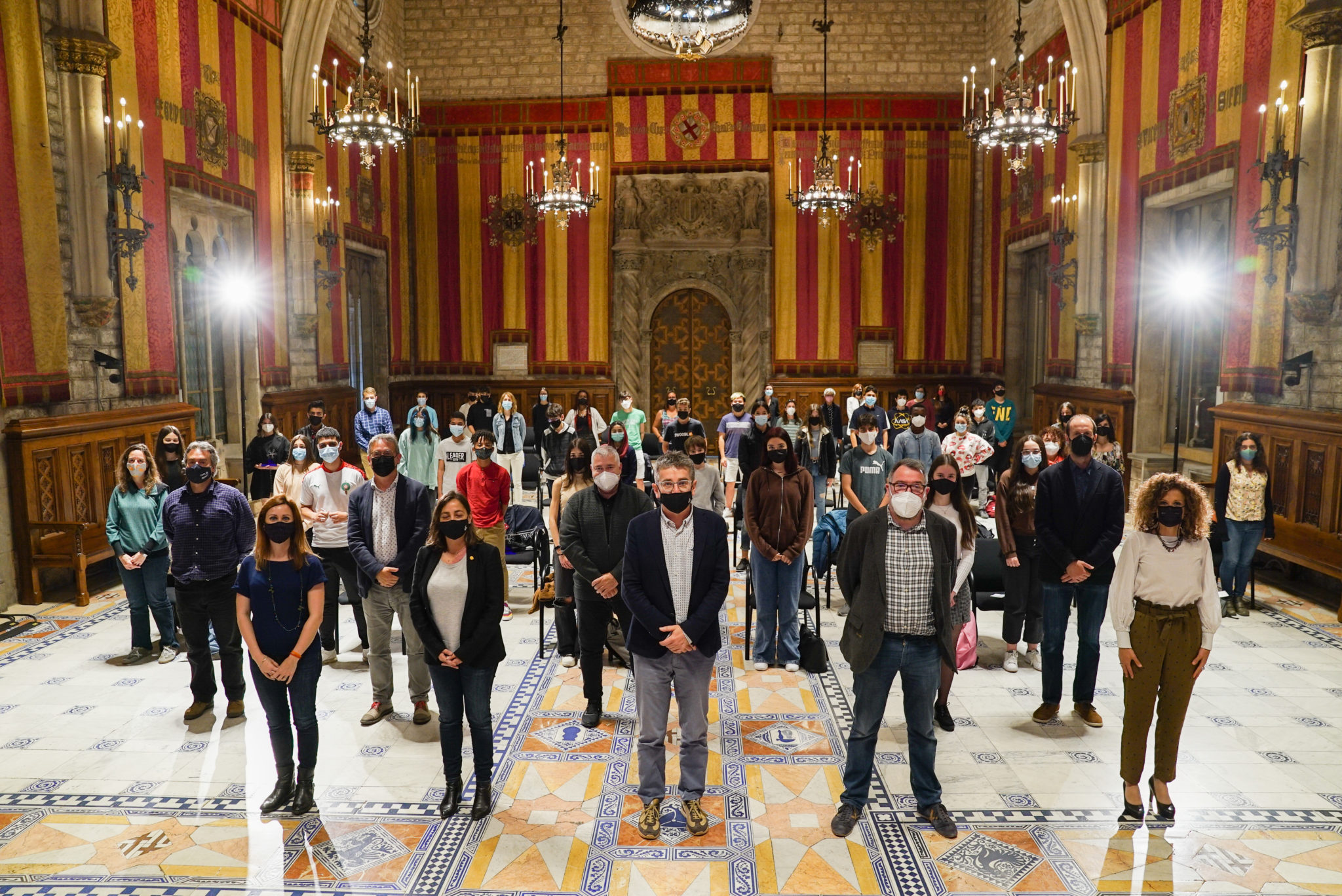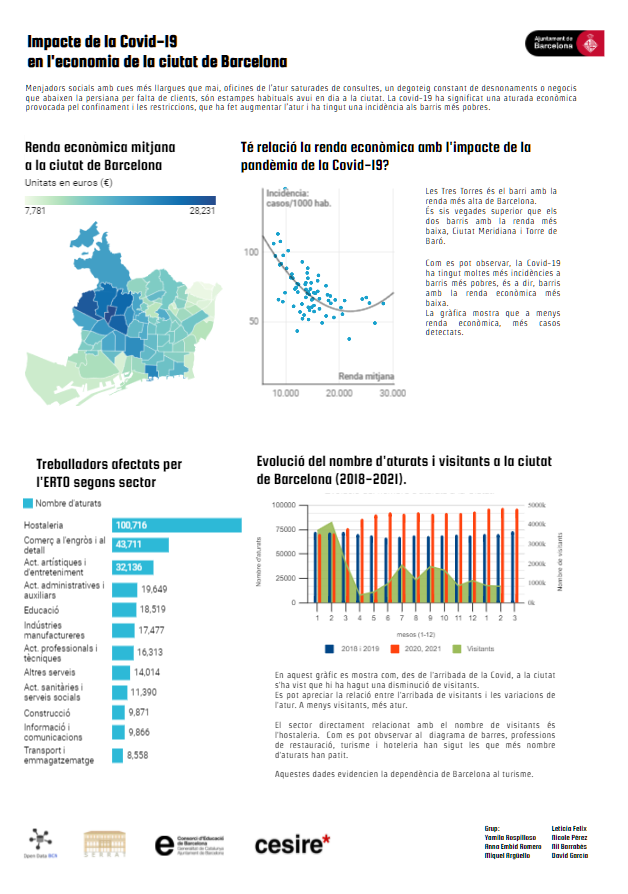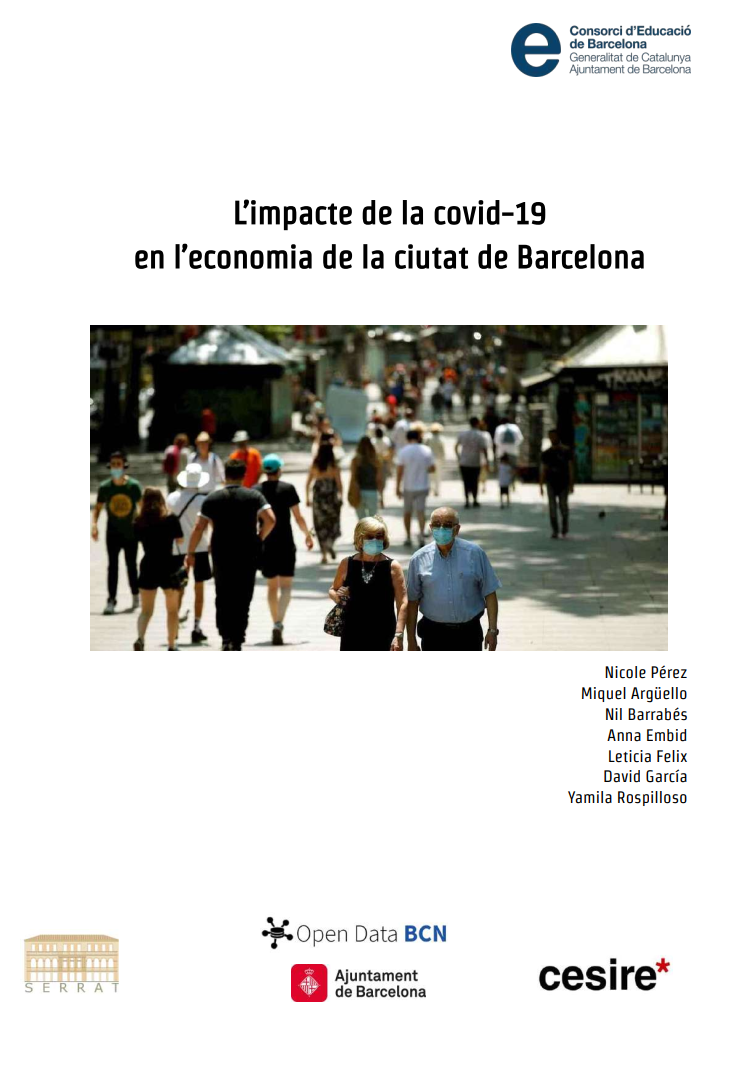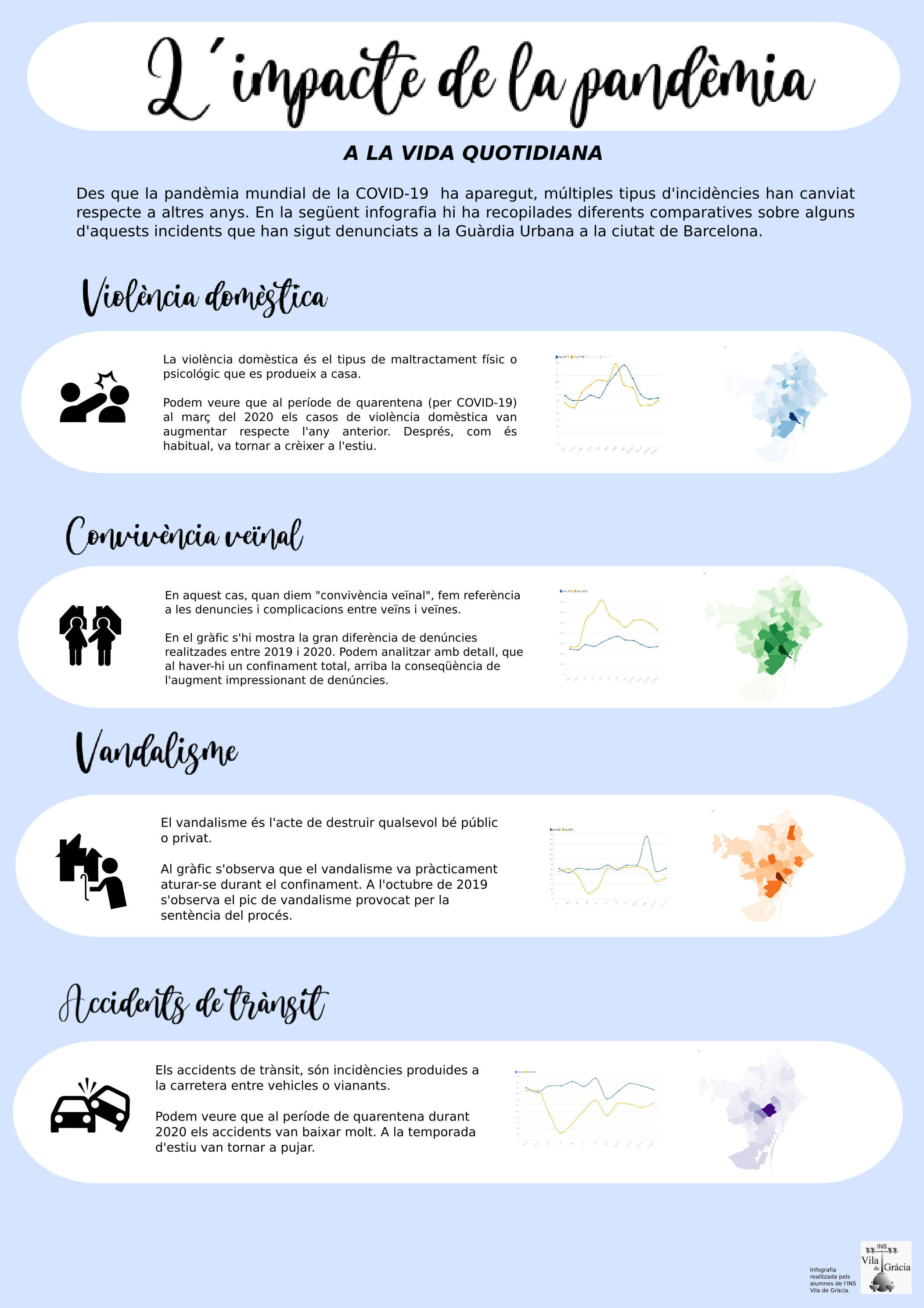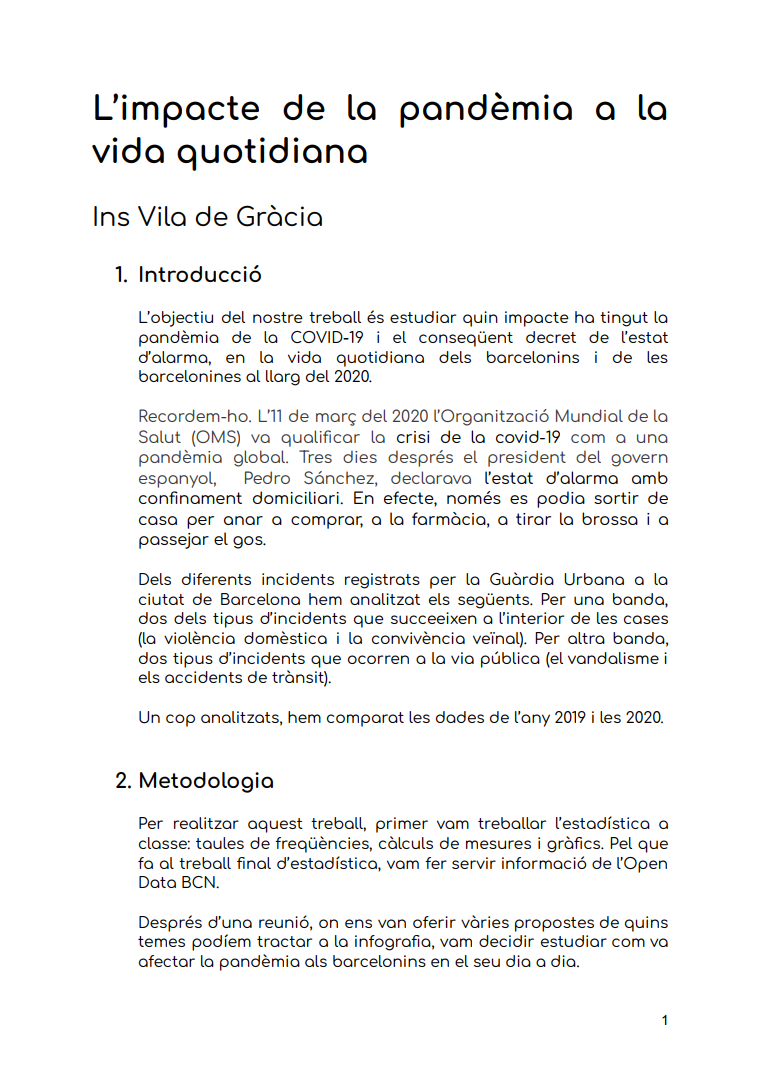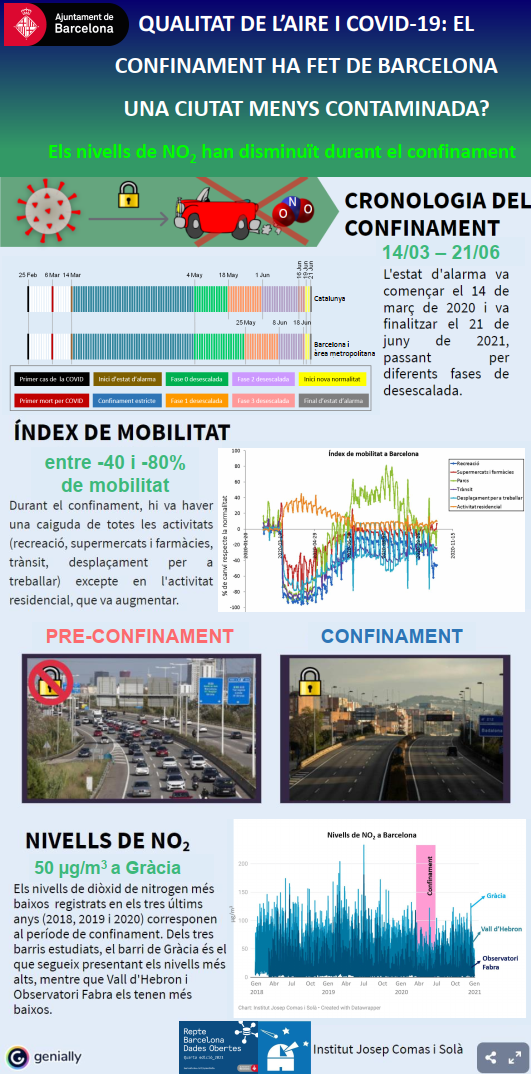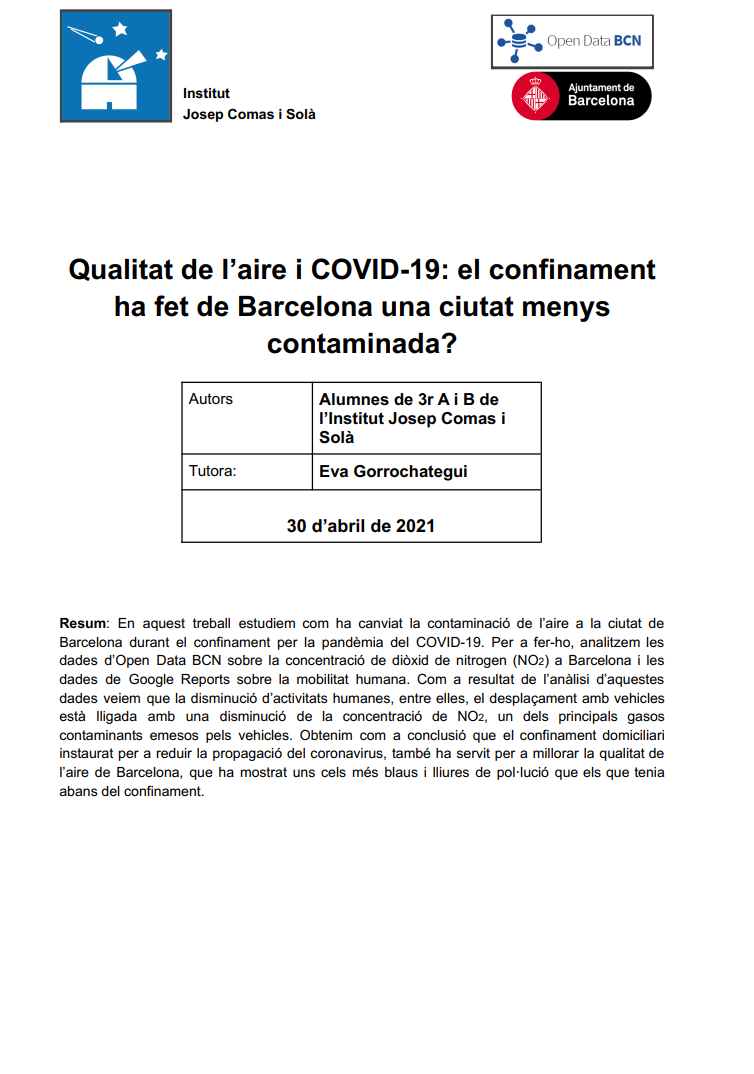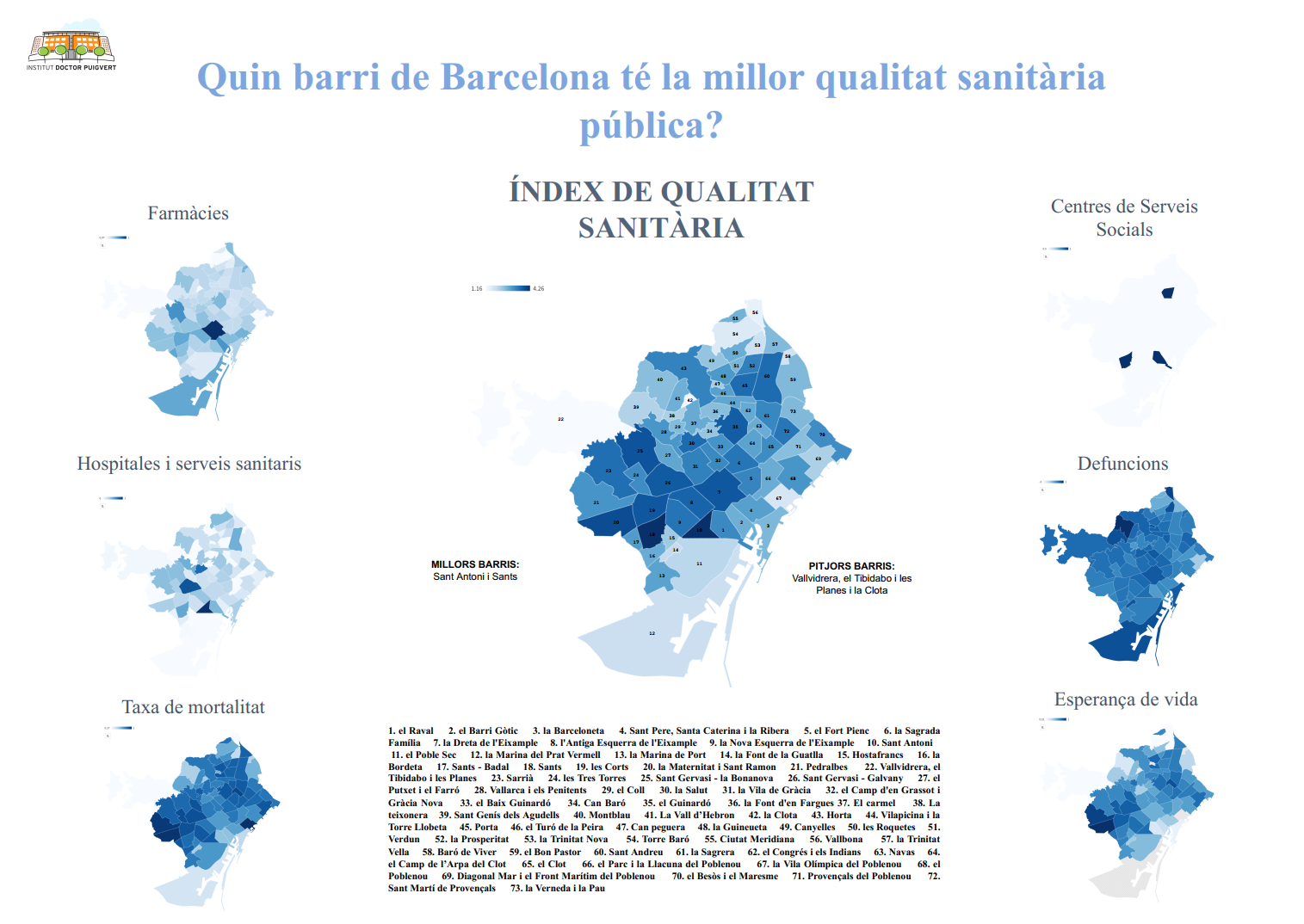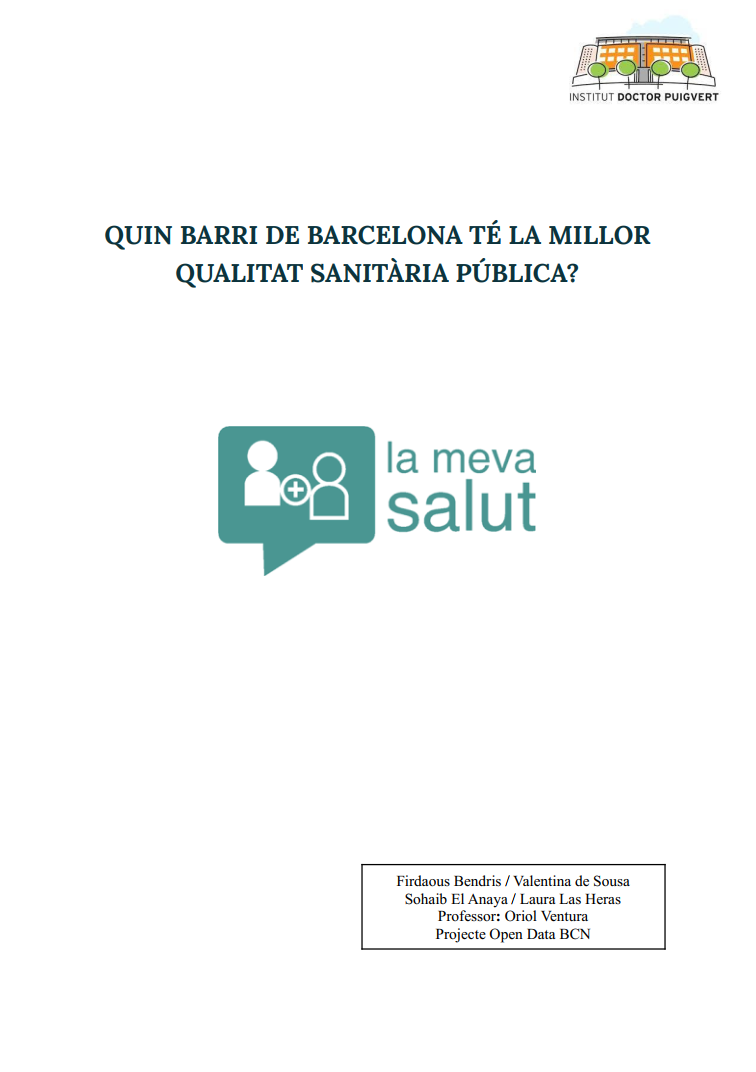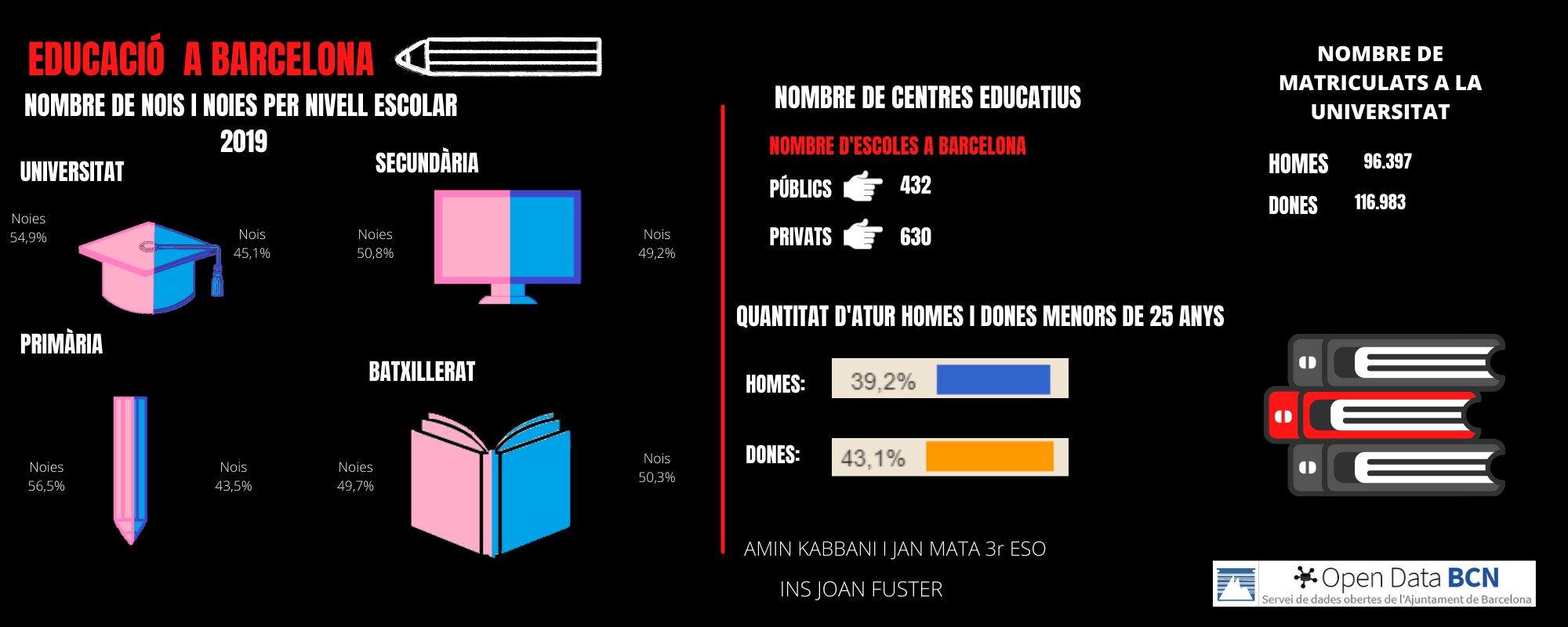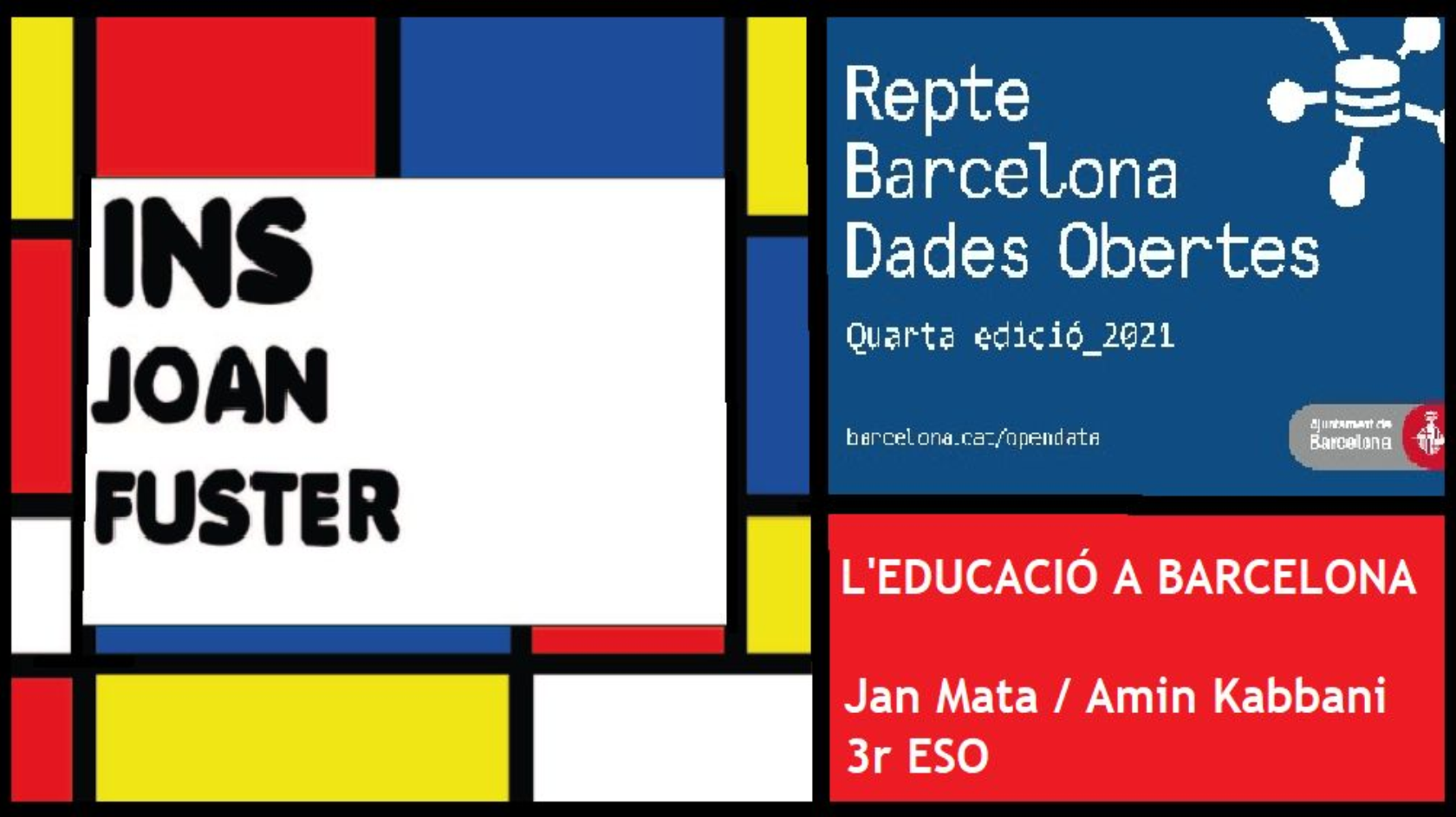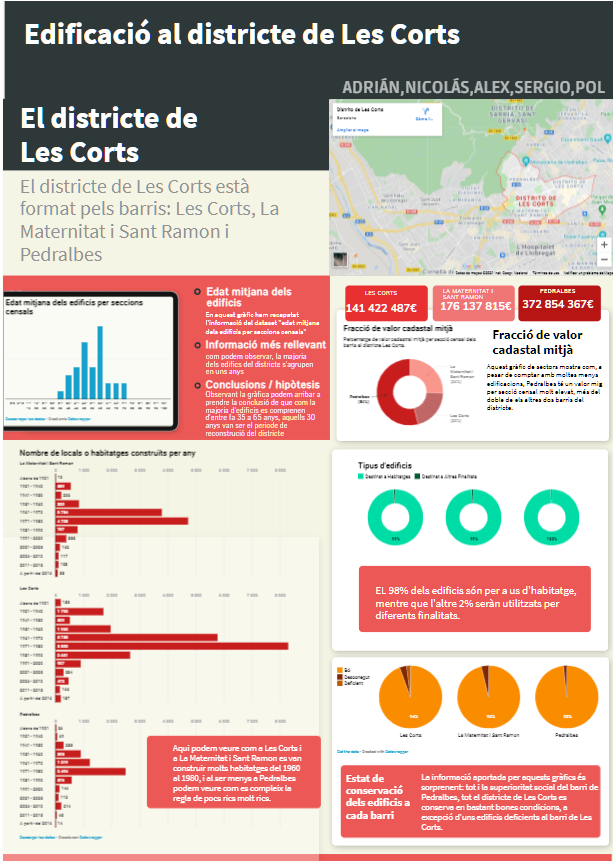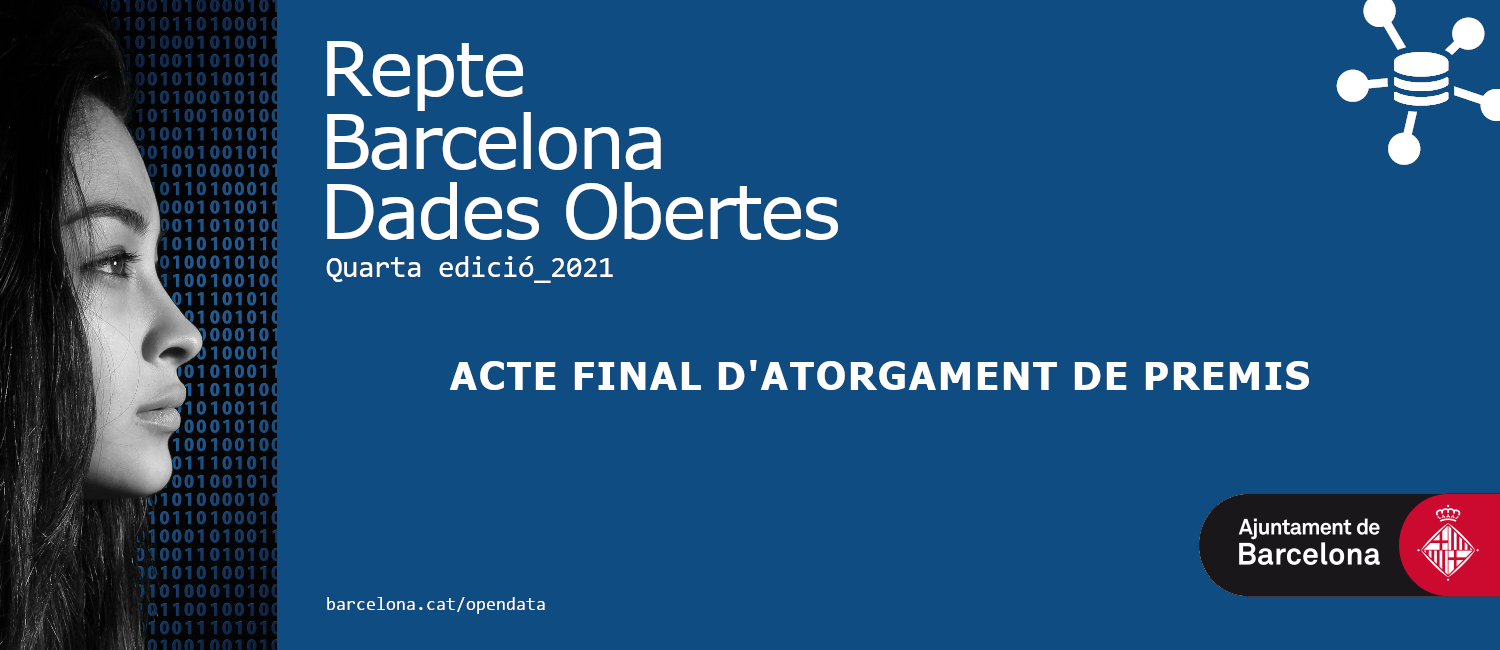
Today, May 25th 2021, the Saló de Cent of the Barcelona City Council has hosted the awards ceremony for the Barcelona Dades Obertes Challenge Fourth edition_2021. The event has been adapted to this new space with a reduced capacity given the exceptional circumstances due to the COVID-19.
The event is the conclusion of the Fourth edition_2021 of this educational project which, led by Barcelona City Council and with the collaboration of the Barcelona Education Consortium and the CESIRE, aims to incorporate open data such as to educational resource in city centers.
A Saló de Cent that has dressed up to reward and publicly recognize the work done by students, this year more than 200, supervised by their teachers with open data.
The event was chaired by Jordi Martí, Councilor of the Presidency of Barcelona City Council, who also held the closing parliament. The host of the event, Sara Díaz, Director Training and Innovation of Barcelona Activa SA and also a member of the organization of the contest, made a brief introduction and gave the floor to the other representatives of the organizing team, Màrius Boada, Director of the Municipal Data Office, Susana Navarro representative of the Innovation, Programs and Training Area of the Barcelona Education Consortium and Enric Castellà representing the CESIRE Education Area (Resource Center Specific Pedagogical Papers to Support Innovation and Educational Research).
Màrius Boada, in his capacity as CDO (Chief Data Officer) of the Barcelona City Council, gave a talk entitled 'Entendre les dades i entendre el món'.
The very good quality of the works presented, and as happened in the previous edition, has not facilitated the task of evaluation to the jury of experts, as commented by the members acting as its representatives, Joan Melià and
- 1st prize to the Institut Josep Serrat i Bonastre with the project "Impacte de la covid-19 en l'economia de la ciutat de Barcelona"
- 2nd prize to the Institut Vila de Gràcia with the project "L'impacte de la pandèmia a la vida quotidiana"
- 3rd prize to the Institut Josep Comas i Solà with the project "Qualitat de l’aire i COVID-19: el confinament ha fet de Barcelona una ciutat"
The prizes of the challenge, as in previous editions, are focused as an experience: 'Escoltem la natura mitjançant imatges aèries de drons' which can be enjoyed by all classmates of the winning groups.
The people in charge of delivering the awards have been: Jordi Martí, Màrius Boada and Susana Navarro.
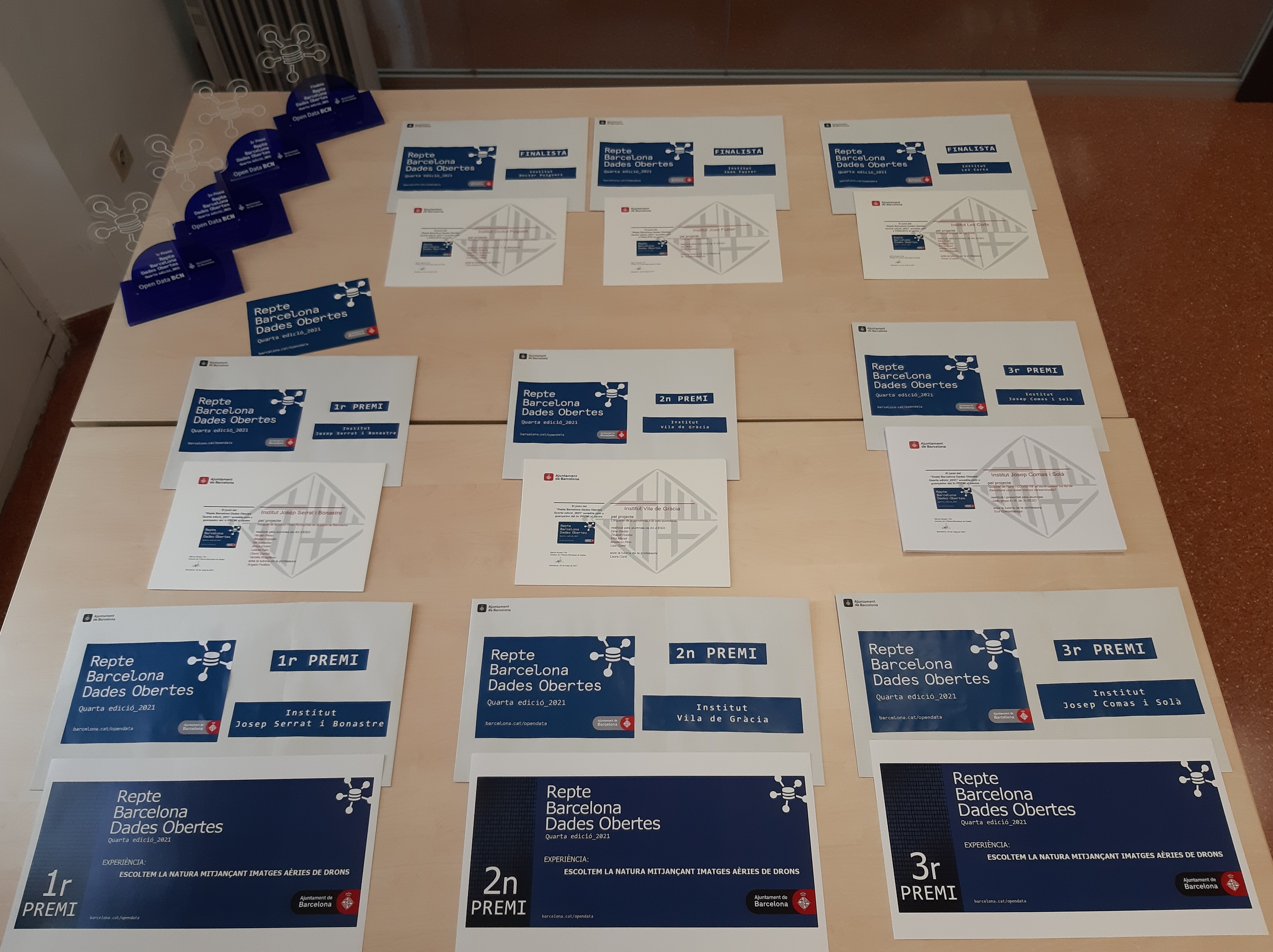
All members and teachers have received a diploma of participation and a commemorative award of this Fourth edition_2021.
Finally, Jordi Martí, closed the event by thanking the students, teachers and the bodies involved.
The event has been streamed on the Barcelona City Council's YouTube Channel.
Congratulations to everyone!
AWARD-WINNING PROJECTS
1st Prize: Institut Josep Serrat i Bonastre
Project: Impacte de la covid-19 en l'economia de la ciutat de Barcelona
Author/s: Nicole Pérez, Miquel Argüello, Nil Barrabés, Anna Embid, Leticia Fèlix, David García, Yamilla Rospilloso
Tutor: Àngels Profitós
Grade: 4th ESO

Infographics, memory and video presentation:
Opinion of the jury
Opinion by: Joan Melià
Commentary: The project aims to explain the serious impact of the pandemic in a city like Barcelona, where the economy is strongly focused on tourism and trade, based on information that can be extracted from open data.
Highlight: A clear methodology has been followed, specifying in detail the data used to analyze a topical issue and impact such as the effect of Covid-19 in the city of Barcelona. Also noteworthy is the socio-economic view based on the analysis of different indicators (correlating data) to better illustrate the effect of the pandemic on the most vulnerable people. Finally, the team has objectively identified (based on data) possible solutions, but caution should be commended when recommending them due to the current context of the pandemic.
Proposal for improvement/continuity: Although the use of datasets with sex-differentiated information is specified, it does not end up moving to work, and this could have provided interesting details. In a more formal aspect, the different media (memory, video, infographics and graphics) include different data or visualizations, which creates some confusion when it comes to understanding what details have been worked on in the project.
2nd Prize: Institut Vila de Gràcia
Project: L'impacte de la pandèmia a la vida quotidiana
Author/s: Etna Godàs, Tiruedil Robles, Irina Marsà, Màssimo Pino i Laia Duret
Tutor: Laura Conti and Reyes Peiró
Grade: 4th ESO

Infographics, memory and video presentation:
Opinion of the jury
Opinion by: Oleguer Sagarra
Commentary: It is a work with a good approach, a good choice of datasets to analyze and a good process both analytical and interpretive as well as methodological. The choice to make a comparative analysis between two periods of time is right and illustrates the phenomenon to be studied.
Highlight: This is a work where both the choice of datasets and the methodology, as well as the rhythm, the performance and the staging of the presentation stand out. Good work has been done and the analysis is consistent.
Proposal for improvement/continuity: Work has two important limitations. On the one hand, and especially the memory, which is not self-contained (the graphs are not shown), nor is it developed by exploiting the full potential of the work done. A critical analysis of the work and tangible proposals for improvement is especially lacking. On the other hand, the graphics in the infographic are very unreadable, which partially hides the good work done with data collection and interpretation.
3rd Prize: Institut Josep Comas i Solà
Project: Qualitat de l’aire i COVID-19: el confinament ha fet de Barcelona una ciutat menys contaminada?
Author/s: 3rd ESO. Groups A and B (36 students)
Tutor: Eva Gorrochategui
Grade: 3rd ESO

Infographics, memory and video presentation:
Opinion of the jury
Opinion by: Enric Rubio
Commentary: The aim of this work is well defined and represents a topical contribution. The result of the analysis that has been developed in this work regarding the relationship between human mobility and the concentration of nitrogen dioxide (pollution), shows how important it is to work to try to reduce the levels of NO2 derived of mobility.
Highlight: Data processing is one of the main elements of this work, where different tools have been used to represent the data. Infographics also represent an element of special attention, where the narrative clearly presents the objectives, data analysis, and conclusions.
Proposal for improvement/continuity: The report does not go into detail of the methods of analysis used. No fluid visual language of interaction with the audience is observed in the presentation, nor do the speakers maintain eye contact with it.
FINALISTS PROJECTS
Institut Doctor Puigvert
Project: Quin barri de Barcelona té la millor qualitat sanitària pública?
Author/s: Firdaous Bendris, Valentina de Sousa, Sohaib El Anaya, Laura Las Heras
Tutor: Oriol Ventura
Grade: 1st Year of High School

Infographics, memory and video presentation:
Opinion of the jury
Opinion by: Laia Albors
Commentary: The objective of this work is well defined and represents an innovative and current contribution: considering differentiating the city's neighborhoods based on available health resources and demographic data is, in fact, relevant and significant information for anyone who decides Live in the city. They have known how to choose the data correctly and the analysis methodology is clearly explained and is adequate to achieve the objectives set.
Highlight: From this work, it is worth highlighting the treatment that has been made of the data, where it becomes clear that data analysis is not only about making graphs, it is also necessary to make calculations to derive the information that is most relevant. For example, in this project, the fact that the data have been scaled and normalized instead of using absolute values, has allowed them to establish a correct comparison between neighborhoods, thus achieving the objective set.
Proposal for improvement/continuity: A small shortcoming found in the work is that the missing values have not been treated in the best way, directly affecting the representativeness of the calculated health quality index. Although the work is very correct, if we wanted to continue working in this line, an idea for improvement would be to consider other variables that would inform us about the levels of health stress in each area.
Institut Joan Fuster
Project: L'educació a Barcelona
Author/s: Jan Mata, Amin Kabbani
Tutors: Montserrat Perela y Melisa Dipacce
Grade: 3rd ESO

Infographics, memory and video presentation:
Opinion of the jury
Opinion by: Jordi Vitrià
Commentary: The aim of the work is interesting and always current: the state of education in Barcelona based on open data. The analysis of the data has revealed complex imbalances regarding the presence of girls and boys at different educational levels and also a biased distribution of schools to private individuals. The work has also analyzed youth unemployment, which can be seen as a factor highly dependent on education among young people. In this aspect, a gender bias is also detected that favors boys over girls.
Highlight: Although the topic is very broad, the aspect that has most interested students has been the gender bias present in the education data in Barcelona. From this point of view, the analysis of the data has allowed the students to realize on their own a very close social problem and to raise a good paradox: How is it that having the girls a slightly higher level of training they suffer a level of unemployment also slightly higher?
Proposal for improvement/continuity: Students have perfectly identified the limitations presented by the data and also what additional information, especially related to a better granularity of the information, would have allowed them to reach more detailed conclusions about the observed phenomenon.
Institut Les Corts
Project: Edificis al districte de Les Corts
Author/s: Adrián Cortés, Nicolás Basso, Àlex Prats, Sergio Usón i Pol Guinart
Tutor: Anna Llopart
Grade: 4th ESO

Infographics, memory and video presentation:
Opinion of the jury
Opinion by: Helena Ramalinho
Commentary: The subject of the work is interesting and also original, I think it is very relevant that the students are interested in their neighborhood and its buildings.
Highlight: The infographic adequately shows the work done and the main conclusions of the project. The presentation is easy to follow and demonstrates the teamwork done.
Proposal for improvement/continuity: The report presents the basic aspects, but it could have been extended by explaining in more detail the methodology and data used, the possible improvements and main conclusions of the project.


